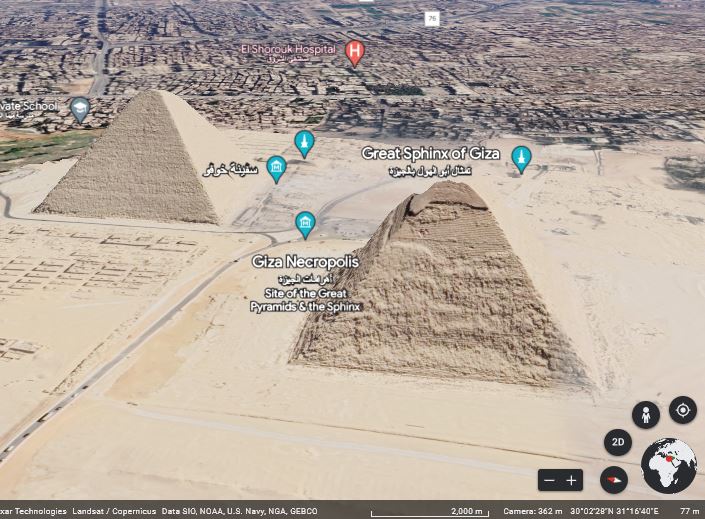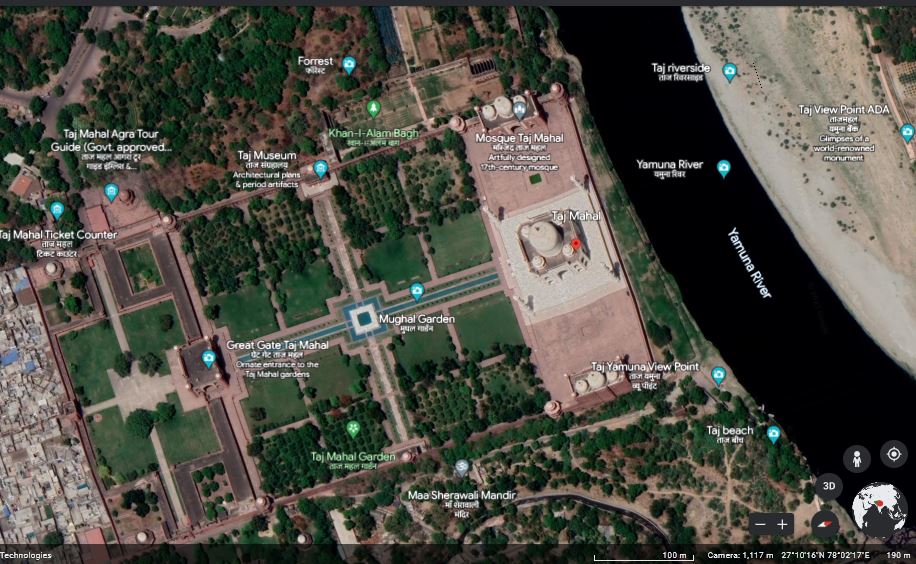The term “world wonders” alludes to notable landmarks or milestones that are thought of as having unique historical or environmental significance. Visitors from all over the globe frequently visit these places to appreciate their elegance and gaze at their structural and artistic achievements (Petricevic, 2020). The world is full of wonders that have been admired and appreciated by people for centuries. From architectural masterpieces to natural wonders, these marvels are a testament to the creativity and ingenuity of human beings (Tickets, 2020). In this report, we will explore three new wonders of the world: The Pyramids of Giza, the Colosseum, and the Taj Mahal.
The Pyramids of Giza
The Pyramids of Giza are located in the Giza Necropolis, Egypt, and are one of the most famous landmarks in the world. They were built between 2589 BC and 2504 BC and are considered to be some of the oldest and largest structures ever built by human hands (Locatelli, 2021). They are located between the latitude and longitude of the Pyramids of Giza, which are 29.9792° N and 31.1342° E. The elevation of the Pyramids of Giza above sea level is 137 meters (449 feet). The camera location for this image is aerial at 362 meters above sea level, as shown in Figure 1 below.

The Pyramids of Giza were built as tombs for Pharaohs and were constructed using large blocks of limestone as shown in Figure 1 above. The Great Pyramid of Giza, also known as the Pyramid of Khufu, is the largest of the three and stands at a height of 146 meters (481 feet). It was the tallest man-made structure in the world for over 3,800 years until the construction of the Eiffel Tower in 1889.
The Colosseum
The Colosseum, also known as the Flavian Amphitheatre, is located in Rome, Italy, and is one of the most iconic structures in the world. It was built between 70 AD and 80 A.D. and is the largest amphitheater ever built (Collector, 2021). The Colosseum was used for gladiatorial contests, animal hunts, and public spectacles such as mock sea battles. The latitude and longitude of the Colosseum are 41.8902° N and 12.4922° E. The elevation of the Colosseum above sea level is 48 meters (157 feet). The camera location for this image is via satellite, zoomed in to 249 meters above the ancient structure, as shown in Figure 2 below.

Figure 2 above shows that the Colosseum is made of concrete and stone and could seat up to 80,000 spectators. It is elliptical in shape and measures 189 meters (615 feet) long and 156 meters (510 feet) wide. The structure has suffered significant damage over the years due to earthquakes and stone robbers, as shown in Figure 2 above, but it remains a popular tourist attraction and a symbol of ancient Rome.
The Taj Mahal
The Taj Mahal is located in Agra, India, and is one of the most beautiful and iconic buildings in the world. It was built by Mughal Emperor Shah Jahan in memory of his wife, Mumtaz Mahal, and is considered to be the greatest example of Mughal architecture (Dirlam et al., 2019). The Taj Mahal is made of white marble and is adorned with intricate carvings and inlaid precious stones (Collector, 2021). The building lies between latitude and longitude 27.1750° N and 78.0422° E, respectively. The elevation of the Taj Mahal above sea level is 171 meters (561 feet). The camera location for this image is in Agra, India, and it was taken 1,117 meters above the ground by satellite imaging, as shown below in Figure 3.

The Taj Mahal was built between 1632 and 1653 and is considered to be one of the greatest works of Mughal architecture. The mausoleum is surrounded by beautiful gardens and features a reflecting pool that enhances its beauty. The main dome of the Taj Mahal stands at a height of 73 meters (240 feet) and is surrounded by four smaller domes. The structure is a UNESCO World Heritage Site and attracts millions of visitors every year.
References
Dirlam, D. M., Rogers, C. L., & Weldon, R. (2019). Gemstones in the era of the Taj Mahal and the Mughals. Gems & Gemology, 55(3). Web.
Locatelli, G. (2021). Is your organization ready for managing “Back-End” projects? IEEE Engineering Management Review, 49(3), 175-181. Web.
P, R. (2019). CV-04 – Scale and Generalization | GIS&T Body of Knowledge. Gistbok.ucgis.org. Web.
Petricevic, I. (2020). 21 Jaw-Dropping Aerial Images of the Ancient Pyramids You Need To See. Web.
Simha, J. (2023). Google Map Satellite view of Taj Mahal. Web.
Tickets, C. R. (2020). Colosseum Aerial Views. Web.
Collector, T. (2021). What Are the Seven Wonders of the World? TheCollector. Web.